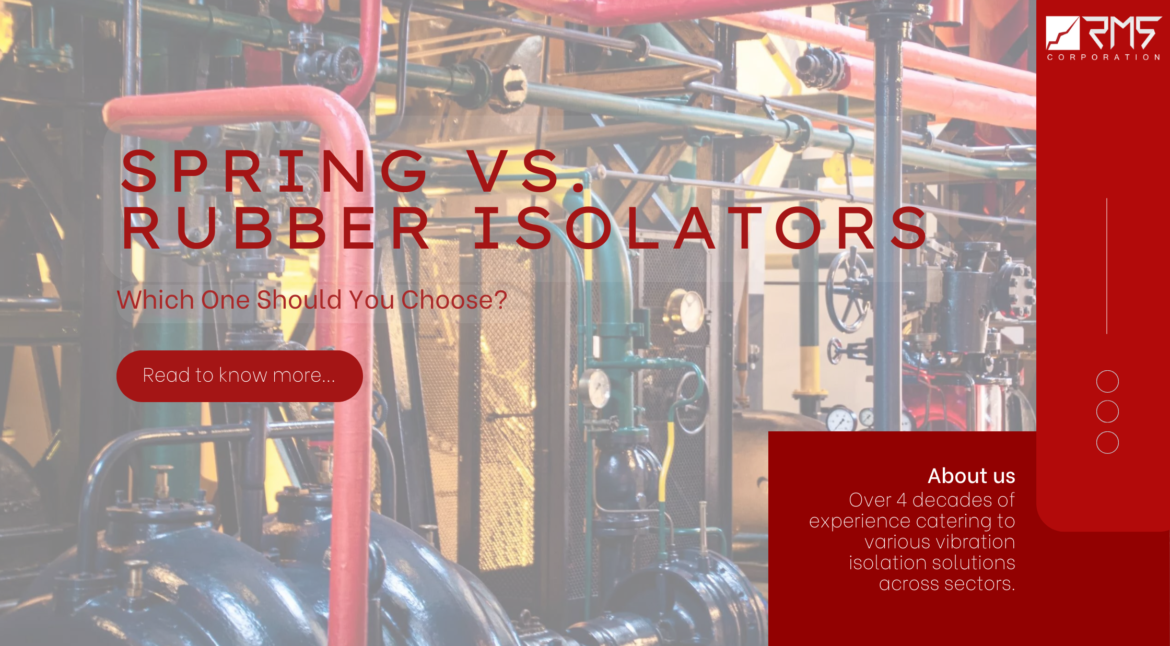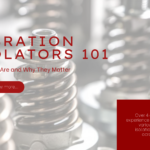Spring Vibration Isolators vs. Rubber Vibration Isolators
Choosing the right vibration isolator can significantly impact the efficiency of your operations. Both spring and rubber vibration isolators serve crucial roles in reducing vibrations, enhancing equipment performance, and ensuring a quieter and safer environment. Understanding the unique benefits of each type will help you make an informed decision to optimize your setup and meet your operational needs effectively. By matching the isolator to specific requirements, you can optimize performance and achieve better results across various applications. While spring and rubber isolators serve the same purpose, their performance varies based on application. This blog will help you understand the critical differences and make an informed choice.
-
Spring Vibration Isolators:
- Spring isolators handle heavy loads and work well in tough environments. For example, they are commonly used in industries like manufacturing, where large-scale machinery such as compressors or presses generates significant vibrations. Additionally, they are essential in the construction sector to stabilize heavy equipment like generators or cranes, ensuring both safety and efficiency in operations. They are particularly useful in industrial settings where heavy machinery generates strong vibrations. Key benefits include:
- Durability: Made from high-strength materials, spring isolators withstand harsh conditions and offer long service life.
- High Performance: Ideal for equipment like compressors, pumps, and large HVAC systems.
- Versatility: Can be customized to suit specific load and frequency requirements.
-
Rubber Vibration Isolators:
- Rubber isolators are commonly used for applications requiring moderate vibration control and noise reduction. For example, they excel in automotive industries to minimize engine vibrations, in home appliances like washing machines to reduce noise, and in medical equipment to ensure precision and stability. Their versatility makes them an ideal choice for environments where cost-effective vibration control is essential. Their key features include:
- Flexibility: Absorbs vibrations and noise effectively.
- Cost-Effectiveness: More affordable than spring isolators, making them suitable for smaller budgets.
- Ease of Installation: Lightweight and simple to install.
Comparison Table:
| Feature | Spring Isolators | Rubber Isolators |
|---|---|---|
| Load Capacity | High | Moderate |
| Vibration Frequency | Low to High | Low to Moderate |
| Durability | Very High | Moderate |
| Cost | Higher | Lower |
The choice between spring and rubber isolators depends on your specific requirements, including load, vibration frequency, and budget. To make the best decision, consider the following framework: first, evaluate the weight and size of your equipment to determine the load capacity needed. Next, assess the environment where the isolators will be used. Finally, review your budget constraints and prioritize features that align with your operational goals. By following these steps, you can select the vibration isolator that offers optimal performance for your specific application. For expert guidance, trust RMS Corporation’s decades of experience.
Not sure which isolator suits your needs? Our experts at RMS Corporation are here to guide you. Contact us for tailored solutions today.




